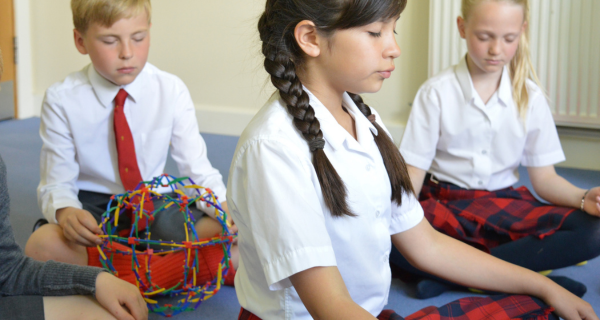This term has seen a variety of different Pastoral Care parent events, hosted by Claire Macpherson, Director of Pastoral Care in the Junior School and her colleagues. One of our speakers was Stan Godek, who gave parents advice from his new book 'Managing Stress and Distress. How to Help, Understand and Support Children and Young People'.
Stan shared some tips on exercises to try with your children to help them manage their stress and anxiety. Here are a few of Stan’s exercises to try at home:
Stress reduction
The more often mindfulness techniques and exercises are practised, the more effective they become, so try to build them into a daily routine. A good rule to follow is same time, same person, same place.
Simply start with two or three minutes and build from there. Here are some easy starter exercises to try:
Simple Breathing Exercises
Mindful breathing involves becoming more aware of and concentrating more fully on the process of breathing. Ask your children to focus fully on their in-breath and then their out-breath. Then ask them to slow down and deepen the in-breath and then do the same with the out-breath. The emphasis should be on focusing on and listening to each individual breath.
Simple Guided Visualisation
These techniques are a development of storytelling which involves listening intently and concentrating on a voice and building a mental image of a “special” or “happy” place. For example, invite your child to take an imaginary journey to the seaside – describe the scene, the sounds, the smells and the sensations. This creates a powerful mental image of a happy place. Once you have conjured up this mental image, encourage your child to just rest there for a short while. With practice, this exercise can be combined with mindful breathing to further improve its effectiveness.
Story telling
Choose your child’s favourite story and focus on a specific place in the story, ask them to pick a favourite part, one that makes them feel good. Ask your child to just close their eyes, focus on your voice and go where your words take them.
Then ask them to think about this part of the story and talk about the image that was conjured up in their mind and how this made them feel. Write down their answers and use them as an introduction to their story at bedtime to help bring about relaxation and readiness for sleep.
Shinrin-Yoku
This literally translates from Japanese as “Forest Bathing,” but its benefits can be achieved by a simple walk in a park or sitting in a garden. The key is to ask your child to try to become aware of where they are and of everything around them. Ask them to concentrate on what they can see; then on what they can hear; then on what they can smell; then on what they can feel on their skin – the wind or rain or sun. Finally ask them if they can tell you how they now feel inside their bodies, in their tummy for example.
Use the re-telling of this experience for relaxation indoors. For example, at bedtime encourage your child to think about the colours, the sounds, the smells they remember. Talk about how these made them feel.
Thanks very much to Stan Godek for these tips. We hope you find them useful.






